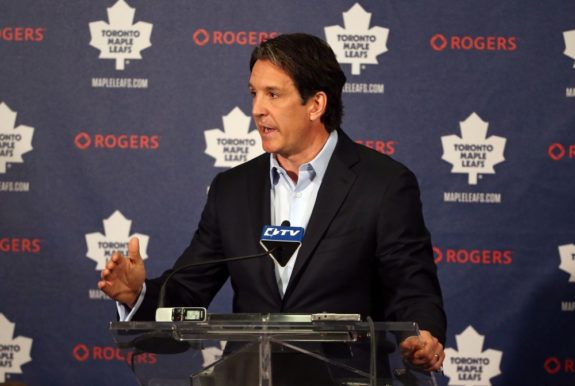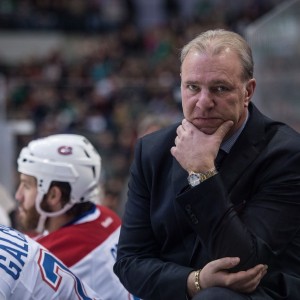The historic rivalry between the Montreal Canadiens and the Toronto Maple Leafs is the oldest in the NHL. The rivalry dates back to the NHL’s first season. There were only two NHL clubs in Canada until 1970 and most fans picked one franchise or the other.
Since the 1967 win by Toronto, Les Glorieux have won 10 Cups, while the Leafs haven’t made it to a Final. In recent years this rivalry has been even more one-sided. The Habs have won each of the last 14 encounters between the two teams. This led some to announce that the rivalry was over.
The rivalry is back, though, and in a reversal of fortune, it’s the Leafs that look like a team on the rise.
A Rivalry Renewed
The historic rivalry is one worth reading about. In the beginning, it was about far more than hockey. Supporting one team over the other was a proxy for support for either French or English Canada. In the 1990s, some connected this rivalry to a larger question about the nature of Canada itself. It is an uncomfortable part of Canadian history. When Jay Baruchel narrated passages from “Two Solitudes” by Hugh MacLennan to open up Hockey Night in Canada in 2013, he managed to touch on some of the complexity.
Today, the rivalry is about bragging rights, not language politics. But the enormity of hockey, and of the Canadiens in Montreal cannot be disentangled from history, identity and, yes, even religion. Don’t forget, French-speaking Habs fans call their jersey, La Sainte Flanelle. In Toronto, the feeling is mutual. After decades of poor play and playoff struggles, fans have something to cheer about. There is a lot of excitement as the trio of Auston Matthews, William Nylander, and Mitch Marner have fans dreaming big.
On Saturday night, the slow, sad and offensively inept Habs face a quick, fun and focused Toronto team at the Bell center. It is a tale of two teams.
Related: Punchless Canadiens Need to Focus on Positives
A Tale of Two Teams
It is hard to avoid the inevitable comparison between these two teams. In the last five years, one team has addressed its faults, rebuilt and has brought a potent offense to every game so far this season. The Leafs have embraced a new identity and put together a group of players, coaches, and management who are pulling in one direction.
The other team is stuck in neutral. After years of poor personnel decisions, questionable trades and a failure to define how they will succeed, the Canadiens are mired in mediocrity. Perhaps nothing sums up the state of the Habs like the decision to remove “No Excuses” from their locker room last year.
The #habs have removed the slogan "No Excuses" from the wall of their locker room. What should they replace it with? pic.twitter.com/O07ee32c0a
— 𝘒𝘦𝘴𝘩 (@keshdheer) August 23, 2016
To understand the significance of the game on Saturday, it is useful to trace the trajectory of these two teams.
Re-Making the Maple Leafs
The Leafs rebuild began in earnest, according to Steve Dangle, in 2015. Key moves occurred much earlier, however. The Leafs selected Morgan Rielly fifth overall in the 2012 draft. Connor Brown was also selected that year and players like Leo Komarov arrived ready to play for the Leafs.

Brendan Shanahan was named Leafs president and began to remake the team in 2014. The next year the Leafs fired Dave Nonis, Peter Horachek, Steve Spott, Chris Dennis, Rick St. Croix, Steve Kasper, Jim Hughes and 18 scouts. They hired Mike Babcock as head coach, traded Phil Kessel and hired Lou Lamoriello as general manager. In 2016, the Leafs traded captain Dion Phaneuf and won the draft lottery where they selected Auston Matthews first overall. Anyone know if that worked out?
It’s the Shanaplan, Stupid
In a conversation with The Globe and Mail in 2016, Shanahan reflected on his initial moves in Toronto.
I had an idea before I even accepted the job of what needed to happen in Toronto… because I’ve gotten support [from ownership], things have fallen into place a little bit quicker.

Key hiring decisions have meant building a group of people with a shared vision. According to Shanahan:
Other people have bought into it and come aboard…In each of my [hiring] meetings – whether it’s been with Mike Babcock or Lou Lamoriello or Kyle Dubas, Mark Hunter, Brandon Pridham – my approach has been honesty. ‘This is who we are. We need your help. We have a long way to go.’ But I like some of the early signs. And we’ve had some luck, obviously, with the lottery draft.
Of course, the Leafs are hardly perfect. They are still prone to the frustrations of a hot goalie. They have some work to do on their blue line to counteract the defensive breakdowns that led to a win by the young and even faster New Jersey Devils this week. But the Leafs look good. Whether it is the “Shanaplan” or the team he has compiled both on the ice and off, Leafs fans have years of exciting hockey ahead of them.
Related: Maple Leafs 3 Stars of Week One
Mediocrity in Montreal
Things are different in Montreal. In a detailed review of the tenure of Marc Bergevin, Connor Lapalme makes several important observations. The first is around questionable hiring decisions. Marc Bergevin was hired in May of 2012 after a disastrous 2011-12 season when the team finished 15th in the Eastern Conference. Bergevin made his first questionable decision by naming Michel Therrien as the Habs’ head coach.

Therrien was working as a TV analyst covering the Canadiens and had not coached since being fired from the Pittsburgh Penguins in 2009. While hiring Claude Julien last year ushered in a new era, it will take time to outgrow Therrien’s curious coaching and personnel decisions.
One legacy of the Therrien era is player development. Montreal selected Alex Galchenyuk third overall. He was touted to be the Canadiens’ future number one center, a team weakness since 1997. Since being drafted, Galchenyuk, he has been bounced from center to the wing so often that no one seems to know what kind of hockey player he can be. This is just one example. In general, Therrien had trouble trusting young players even when they were playing better than the veterans.
Who are the Habs?
In terms of identity, the Habs have been all over the road. On the one hand, the Habs were supposed to be about speed. In the Therrien era, the team skewed towards the smaller side and Therrien was fond of saying that he wanted them to “play with pace.”
The system focused on the chip and chase and relied on the stretch pass. The problem was that at various points in the season, Bergevin would trade for bigger players designed to throw their bodies around and be tough to play against. While this was in service of Therrien’s desire to build a grinding team, it never really worked. Worries about Bergevin’s management style existed before the now infamous P.K. Subban for Shea Weber trade. However, June 29, 2016, was a day that broke the hearts of many in Montreal, split the fanbase, and may have “broken the team.”
Of course, all is not lost. The Habs still have Carey Price, Max Pacioretty and are led by Claude Julien. There are some positives to point to early this season. The challenge is that those who are pessimistic about Montreal are marshaling arguments that are difficult to discount.
Related – 50 Years Ago in Hockey: Canadiens Send Leafs Packing
Identity and Irony
There is a delicious irony here, for those of you who go in for that sort of thing. The rivalry between Montreal and Toronto was born of history and happenstance. How we understand questions around identify between these two teams has changed over the years. It still remains relevant.
Today, Toronto seems to know who they are, and what they want to do. At present, no one is clear about the Habs identity. With the acquisition of Jonathan Drouin, the promotion of Charles Hudon, and the debut of the Laval Rocket, perhaps the French identity of the Canadiens is re-emerging. In the short term, it looks like too little, too late. While the Habs have won each of their last 14 encounters against Toronto, it is the Leafs that are favored to win in Montreal this weekend.